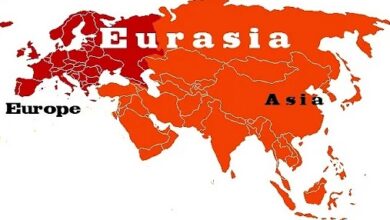Thermal Energy
Thermal energy is the amount of energy contained in some system solely by the effect of its temperature . However, this concept should not be confused with that of internal energy. Internal energy, in turn, is defined as the sum of kinetic energy (translational, rotational and vibrational) with the different forms of potential energy (attractive or repulsive) that may exist between the molecules of a body.
The concept is therefore problematic, as it is often confused with the concept of internal energy. Therefore, we will define the latter objectively: internal energy is the form of energy contained in a system by virtue of its temperature alone.
More rigorously, we say that thermal energy corresponds to the difference in energy between an object at a certain temperature and the energy it would present when at absolute zero temperature. In other words, we can say that, for ideal gases, the it consists of the sum of the kinetic energy of its particles.
It of a system can be transferred to other bodies as a result of a temperature difference, in which case we call the transfer of thermal energy heat.
Ideal gases do not present any type of interaction (potential energy) between their particles, which is why, exclusively for this type of system, the internal energy corresponds to the thermal energy. Therefore, in this article we will describe the properties of thermal energy treating it as a synonym for internal energy.
Formula
In ideal gases, the translational kinetic energy is much more expressive than the rotation and vibration kinetic energies. According to the kinetic theory of gases, the average translational kinetic energy of the molecules of an ideal monatomic gas (which corresponds to its thermal energy) can be calculated using the following identity:
![]()
E CIN – average kinetic energy (J)
K B – Boltzmann’s constant (1.38.10 -23 J/k)
T – temperature (K)
The previous equation is a result of the energy equipartition theorem. According to this theorem, each degree of freedom, that is, each possible direction of movement of the molecules is equivalent to a factor of ½ on the average kinetic energy. In the case described, as we consider only the translational movement, there are only three possibilities: the x,y and z directions. Therefore, the factor that multiplies the product K B T is 3/2.
Where do we find thermal energy
Any body that is at a temperature greater than absolute zero (0 K or -273.15 ºC) has thermal energy. The movements performed by its constituent elements (atoms, neutrons, protons and electrons) give it this energy.
When a body is at temperatures higher than those of its surroundings, its thermal energy will flow spontaneously towards bodies of lower temperature, until thermal equilibrium is established . The situation of thermal equilibrium is properly defined by the zeroth law of thermodynamics .
How thermal energy works
The thermal energy of a body is directly proportional to its temperature and corresponds to the sum of the kinetic energies of the set of molecules that constitute it. We can write this definition of internal energy in the form of a summation of the kinetic energies of each molecule:
![]()
E T – thermal energy (J)
K I – thermal energy of the ith molecule
It is important to note that the kinetic energy that contributes to the thermal energy is only the thermal energy of the constituent particles of the system. Thus, the macroscopic kinetic energy of the system does not contribute to the calculation of its thermal energy.
Uses
Thermal energy can be extracted from heated bodies and transformed into other forms of energy, as in thermoelectric power plants . In this type of power plant, water is heated under high pressure, when released it is transformed into water vapor and the great kinetic energy of its particles is used to move large turbines. The motion of the turbines is then converted into electrical energy through the principle of electromagnetic induction .
When burned, fuels such as gasoline, alcohol and coal acquire a large amount of thermal energy, this energy, in turn, is transferred to the surroundings and can be used to move large machines, such as internal combustion engines, used in automobiles . of all kinds.
Thermal energy and heat
It is necessary to establish a difference between the concepts of thermal energy and heat . We say that heat is the transfer of thermal energy, however, it is not true that a body endowed with a lot of thermal energy is capable of transferring it at high rates.
A classic example of this is the flame of a candle: in the lower region of the burn, where a bluish color is seen, the temperature can reach 1400 ºC, however, the energy transfer capacity of the candle is very small. This is because this transfer rate depends directly on the mass of the body that transfers it in the form of heat.
The next equation, known as the fundamental equation of calorimetry, shows how the amount of heat exchanged between bodies of different temperatures is calculated:
![]()
Q – heat (J)
m – mass (kg)
c – specific heat (J/kg.K)
ΔT – temperature variation (K)
The equation shows us that the transfer of thermal energy depends on the mass of the body, on the temperature variation suffered by it and also on a microscopic physical property called specific heat .
Specific heat is a property of each substance that defines the amount of thermal energy in transit required to change the temperature of 1 kg of substance by 1 K (or 1 ºC). A commonly used unit for measuring specific heat is cal/g °C, in which case water is used as a reference: 1 cal is needed to change the temperature of 1 g of water by 1 °C.


